Pan Seared Crispy Skin Salmon
Crispy Skin Salmon is a simple yet exquisite dish that tastes like it’s from a 5-star restaurant! This recipe for pan seared salmon works perfectly every time and the best part is, it only takes about 15 minutes from pan to plate.
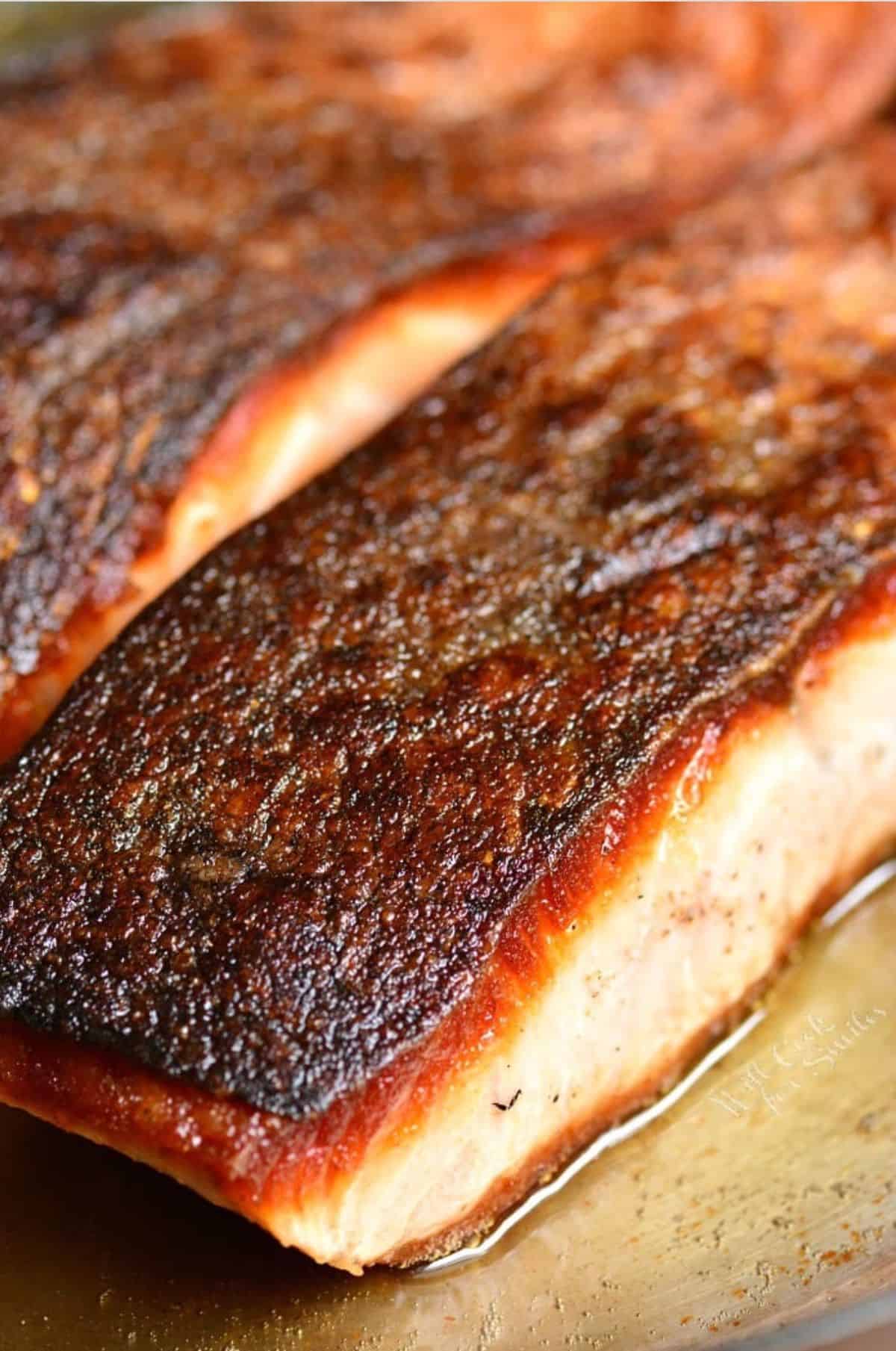
Salmon is often my go-to protein for an easy, delicious AND nutritious dinner. This crispy skin salmon recipe is perfect because:
- It’s always delicious, juicy, and flavorful when made just right. Even if it’s simply seasoned with a little salt and pepper, it always tastes delicious!
- This crispy skin salmon recipe calls for just those two seasonings in order to really focus on the natural flavors of the fish itself.
- Besides picking out a good quality salmon filets, there’s really not much effort required to make this 5-star fish.
- Many people don’t realize that salmon skin isn’t just edible – it’s downright delicious and easy to accomplish with just a few simple steps.

How to Make Crispy Skin Salmon
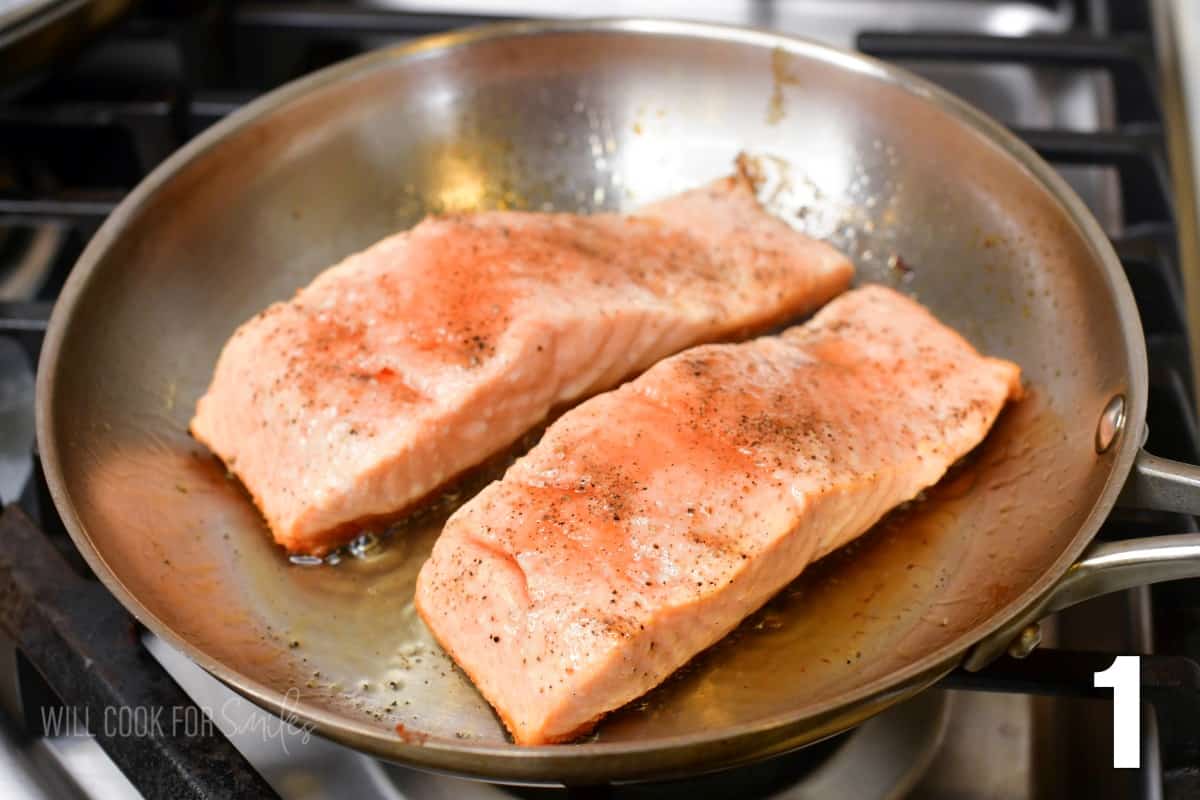
- Prepare the salmon – Before cooking it, make sure salmon is cold. It should be straight from the fridge. Pat the fillet dry with a paper towel and rub it with a little bit of oil all around.
- PRO TIP: Don’t add salt and pepper to the skin until ready to place in the pan. Salt draws out moisture so salting salmon long before cooking will make it wet.
- Preheat the pan – Place your pan over medium to medium-low heat. Don’t set it higher than medium! It should take about 5-7 minutes to adequately preheat the pan.
- Add salmon to the pan – Add oil to the pan and spread it around. Add the salmon to the prepared pan skin side down.
- PRO TIP: DO NOT TOUCH the salmon once you place it into the pan! It will get stuck to the pan initially so moving it right after placing it into the pan will rip the skin off. When the filet is cooked enough, it will release from the pan naturally.

- Cook the salmon – Let the salmon cook skin side down until it’s about 90% done. Check the skin by gently lifting the fillet once in a while to make sure it’s not burning.
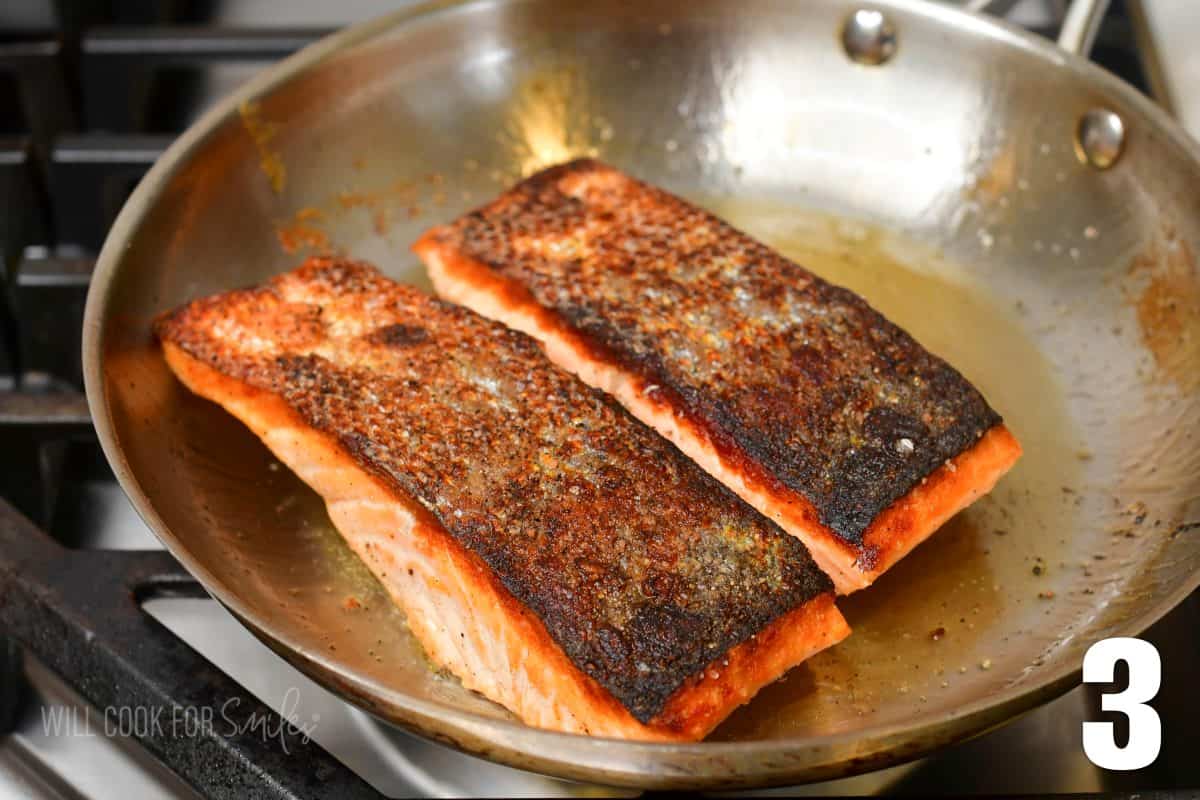
- Finish cooking the salmon – Turn off the heat and flip salmon skin side up. Let it cook for another minute to a minute and a half, then take it out of the pan.
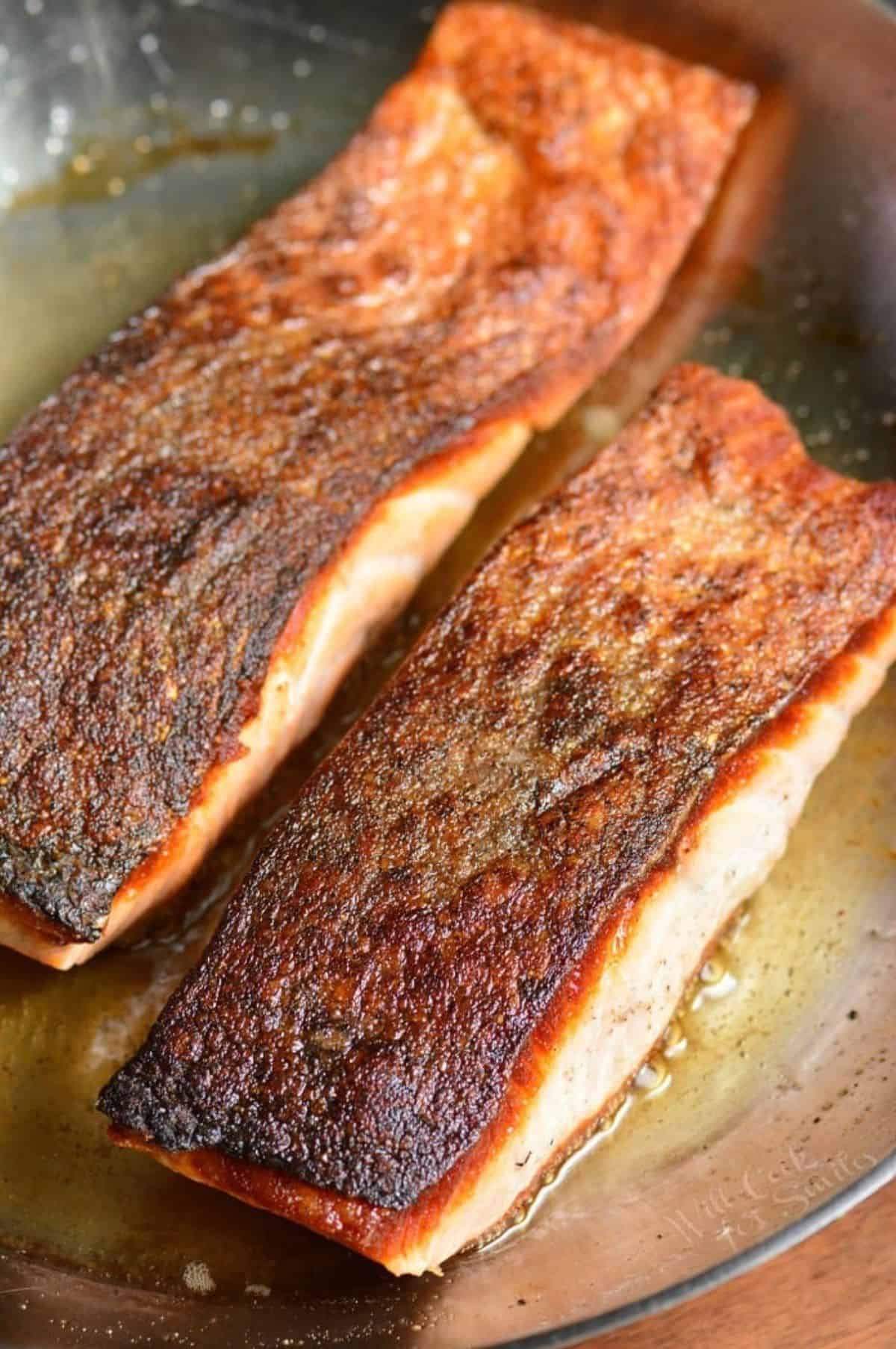
Recipe FAQs
Unlike Oven Baked Salmon, crispy skin salmon should always be served skin side up and on top of salad, sauce, or sides. Noting should go over the top of the crispy skin or it will get soggy very fast. Always nestle salmon over whatever you are serving it with and if you are serving it with sauce, pour sauce in the plate first and place the salmon on top.
If the pan is smoking a lot after adding oil, it’s too hot. Simply turn down the heat a bit or take the pan of heat for a minute or two to get rid of the smoke.
I’ve used several different pans when making crispy skin salmon, and I’ve found that I always get the best results with my stainless steel pan.
Also, it’s important to make sure the pan is clean so that fish doesn’t get stuck to anything. It’s also important to make sure to preheat the pan first. Preheating the pan is an important step in everything you cook but it is especially important when cooking fish or cooking on stainless steel.
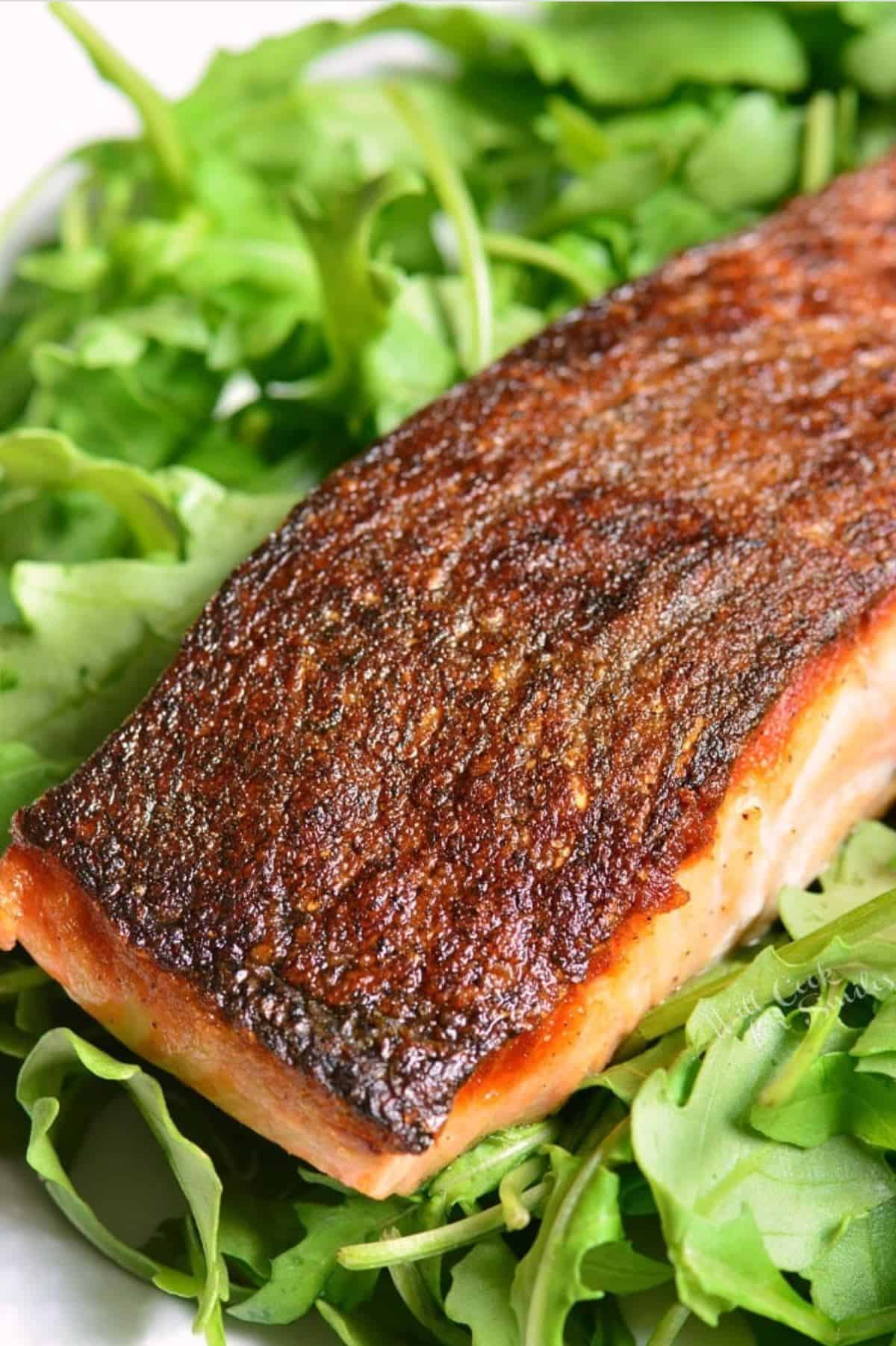
More Salmon Recipes to Try
DID YOU MAKE THIS RECIPE? PLEASE leave a 🌟 star rating! Let me know how you liked it by leaving the 📝 comment below or share and tag me on social media @willcookforsmiles. DON’T FORGET to subscribe to my newsletter!

Crispy Skin Salmon Recipe
Ingredients
- 1 lb salmon fillets average 2 fillets of Atlantic salmon (use other if prefered)
- salt
- fresh cracked black pepper
Instructions
- Before cooking it, make sure salmon is cold, straight from the fridge.
- Set a stainless steel pan over medium or just a little below medium heat. (Every stove is different especially comparing gas and electric, so you will know your stove best. Just don’t set the heat higher than medium.) It will take about 5-7 minutes to preheat the pan.
- Pat salmon dry with a paper towel and gently rub it with a little oil all around. Don’t add salt and pepper to the skin until ready to place in the pan. Salt draws out moisture so salting salmon long before cooking will make it wet.
- Add a couple of tablespoons of canola oil to the pan, spread it around, and add salmon to the pan, skin down. (If the pan is smoking a lot after adding oil, it’s too hot so turn down the heat a bit.)
- Let salmon cook on the skin side until it’s 90% done. Check the skin by gently lifting salmon once in a while to make sure it’s not burning.
- Turn off the heat and flip salmon. Let it cook for another minute- minute and a half and take out of the pan.
- Total cook time will always depend on the thickness of salmon fillets. For a nice juicy salmon the center temperature should be around 125F°.
- (Note: more details and tips can be found in the post.)
Video
Notes
- Salmon – When it comes to seafood, quality ALWAYS matters! Better quality salmon will yield the best flavor and texture. Ask your local fish monger where they get their salmon. You’ll want it to be sustainably farmed or wild caught.
- Don’t add salt and pepper to the skin until ready to place in the pan. Salt draws out moisture so salting salmon long before cooking will make it wet.
- DO NOT TOUCH the salmon once you place it into the pan! It will get stuck to the pan initially so moving it right after placing it into the pan will rip the skin off. When the filet is cooked enough, it will release from the pan naturally.
Nutrition
Originally published on Will Cook For Smiles in December 2018.
All images and text ©Lyubov Brooke for ©Will Cook For Smiles. Please do not use my images without prior permission. If using my posts in collections and features, please link back to this post for the recipe.
Disclaimer: Nutrition information shown is not guaranteed to be 100% accurate as most ingredients and brands have variations.
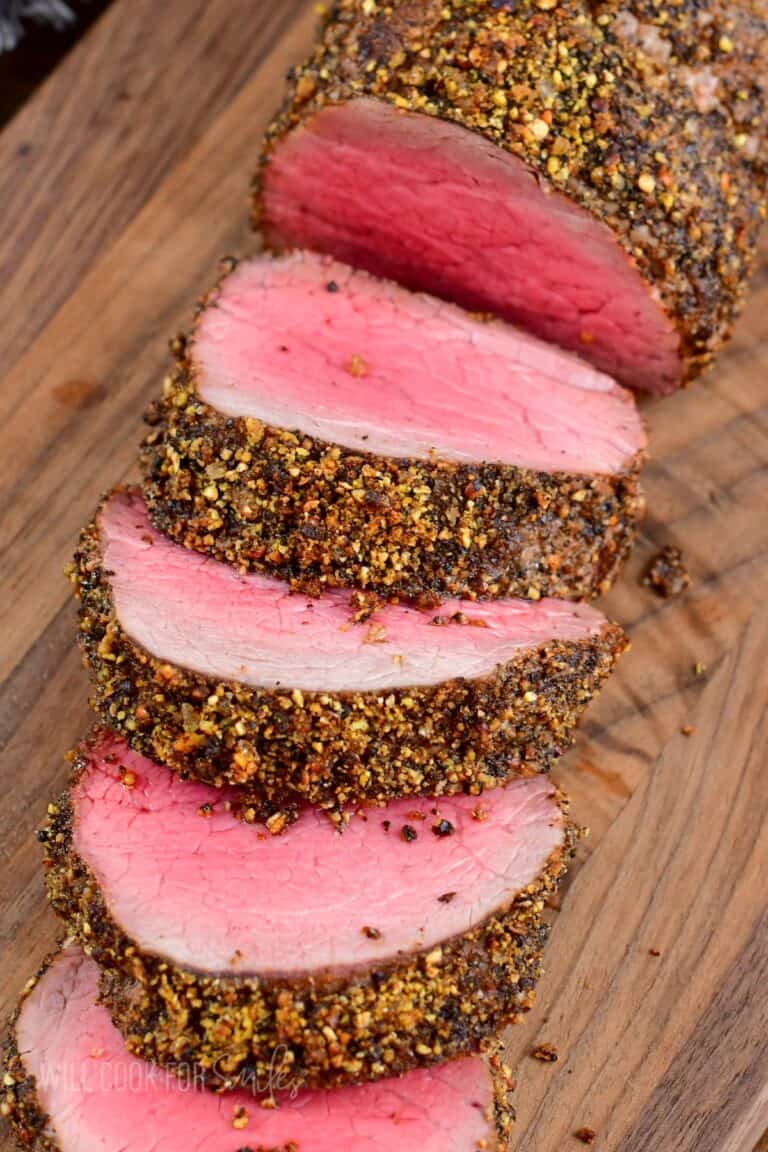


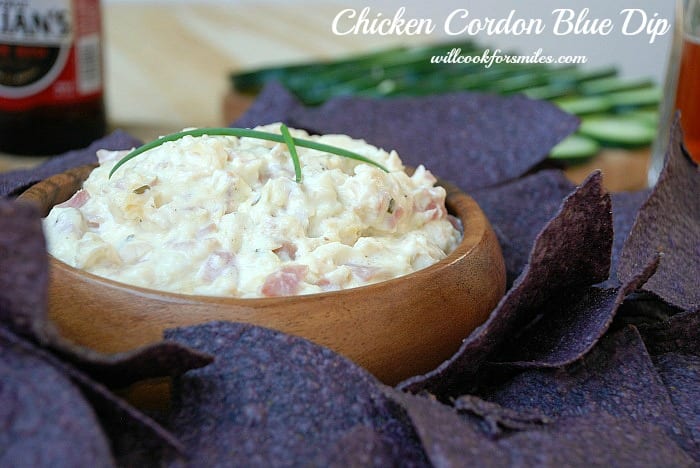
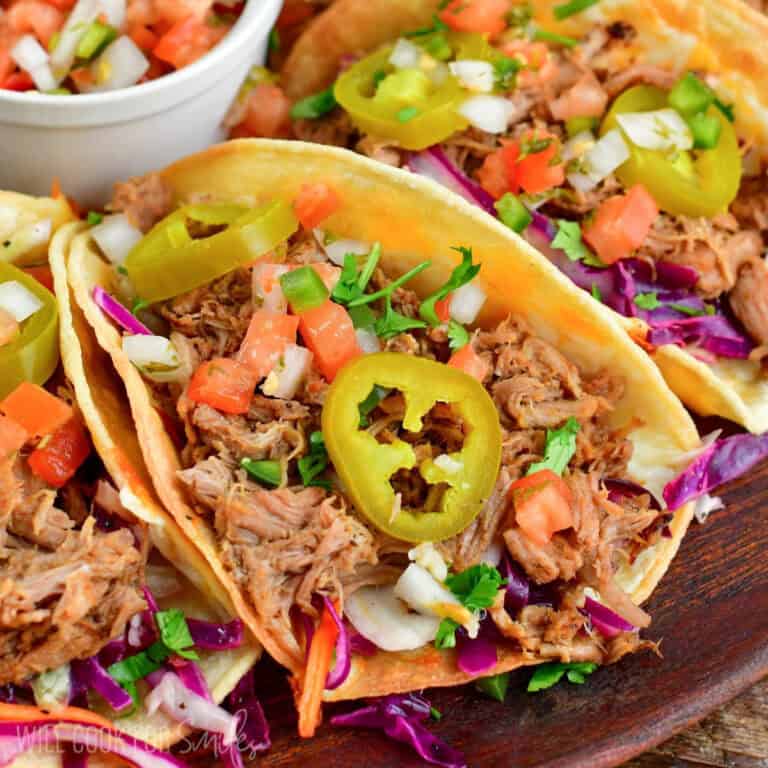









I too had trouble with getting the skin crispy. Thanks to you my fish comes out great!!! Thank you.
That’s awesome to hear! 🎉 Crispy salmon skin can be tricky, but I’m so glad the tips helped. Enjoy your perfectly seared salmon, and thanks for sharing! 😊
This looks delicious! Will definitely try this!
Thanks, Traci! Let me know how you like it! 🙂
This recipe worked perfectly! I usually broiled salmon filets, but never got the crispy skin I wanted! Not only is this recipe simple, but the salmon comes out moist and very flavorful! Who knew? I did make a an accompanying sauce with chopped shallots sauteed in unsalted butter, cooked down, with a few tablespoons of chicken broth, then added dill weed an a few tablespoons of cream. I used the same pan and de-glazed with the butter and broth. Voila! And, you’re right! Rather than spoon the sauce OVER the cooked salmon, I spread some on the plate first and THEN placed the cooked salmon filet over the sauce, with some cooked rice! Wonderful! Thank you!
I am so glad you liked it!
Should you descale the salmon first? No one ever mentions this in the recipes I’ve looked at. Looking forward to trying this tonight! Thanks!
I personally started descaling the salmon and making a series of cross cuts through the skin the length of the fish. I went from never eating the skin (soggy) to always eating the skin (crispy).
I haven’t been able to scale my salmon effectively – how are you doing it?
If you cook a lot of fish it may be worth it to invest in a tool to scale fish but if not you can use a butter knife and you need good light so you can see the fish scales because they shimmer in the light then use your butter knife to scrap them off.